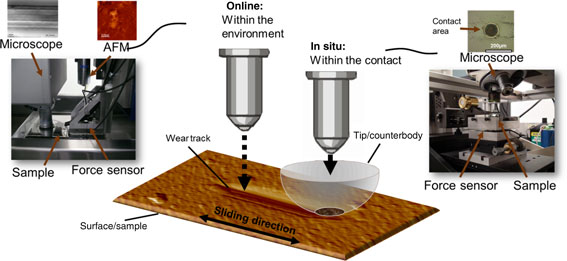Crossref Citations
This article has been cited by the following publications. This list is generated based on data provided by Crossref.
Behera, P
Sriraman, K R
Chromik, R R
and
Yue, S
2017.
Combiningin situtribometry and triboscopy to understand third body behavior of a Cd coating.
Surface Topography: Metrology and Properties,
Vol. 5,
Issue. 1,
p.
014001.
Shockley, J. Michael
Horton, Derek J.
and
Wahl, Kathryn J.
2017.
Effect of aging of 2507 super duplex stainless steel on sliding tribocorrosion in chloride solution.
Wear,
Vol. 380-381,
Issue. ,
p.
251.
Stoyanov, Pantcho
and
Chromik, Richard
2017.
Scaling Effects on Materials Tribology: From Macro to Micro Scale.
Materials,
Vol. 10,
Issue. 5,
p.
550.
Chromik, Richard R.
and
Zhang, Yinyin
2018.
Nanomechanical testing of third bodies.
Current Opinion in Solid State and Materials Science,
Vol. 22,
Issue. 4,
p.
142.
Dienwiebel, Martin
and
Stoyanov, Pantcho
2018.
Advanced Analytical Methods in Tribology.
p.
289.
Zhang, Yinyin
and
Chromik, Richard R.
2018.
Self-Lubricating Composites.
p.
33.
Zhang, Yinyin
Mollon, Guilhem
and
Descartes, Sylvie
2020.
Significance of third body rheology in friction at a dry sliding interface observed by a multibody meshfree model: Influence of cohesion between particles.
Tribology International,
Vol. 145,
Issue. ,
p.
106188.
Zhang, Yinyin
and
Chromik, Richard R.
2022.
Self-Lubricating Composites.
p.
31.
Aghababaei, Ramin
Brodsky, Emily E.
Molinari, Jean-François
and
Chandrasekar, Srinivasan
2022.
How roughness emerges on natural and engineered surfaces.
MRS Bulletin,
Vol. 47,
Issue. 12,
p.
1229.
Harfouche, Maya M.
Alidokht, Sima A.
and
Chromik, Richard R.
2025.
In Situ and Ex Situ Analysis of the Reciprocating Sliding Wear Behavior of Cold Sprayed CrMnCoFeNi Cantor HEA Coatings in Dry Air and Ambient Air Conditions.
Tribology Letters,
Vol. 73,
Issue. 4,
Huang, Peng
Chen, Xinchun
Deng, Wenli
and
Luo, Jianbin
2025.
Superlubricity based on tribolayer.
Materials Today,



